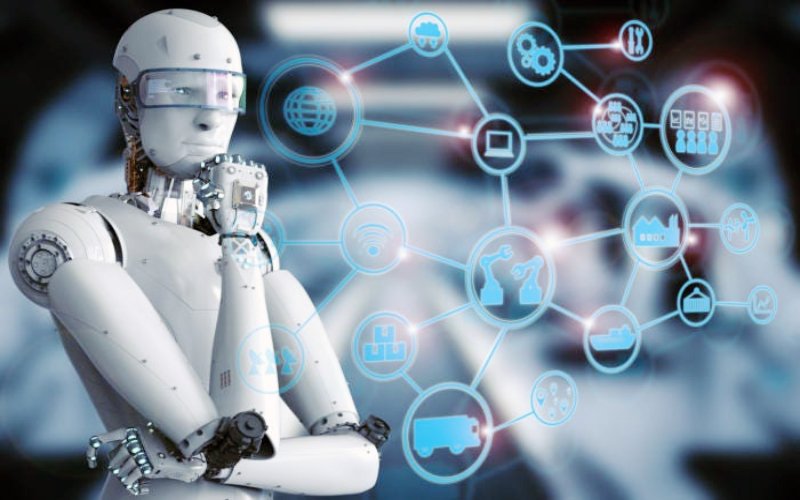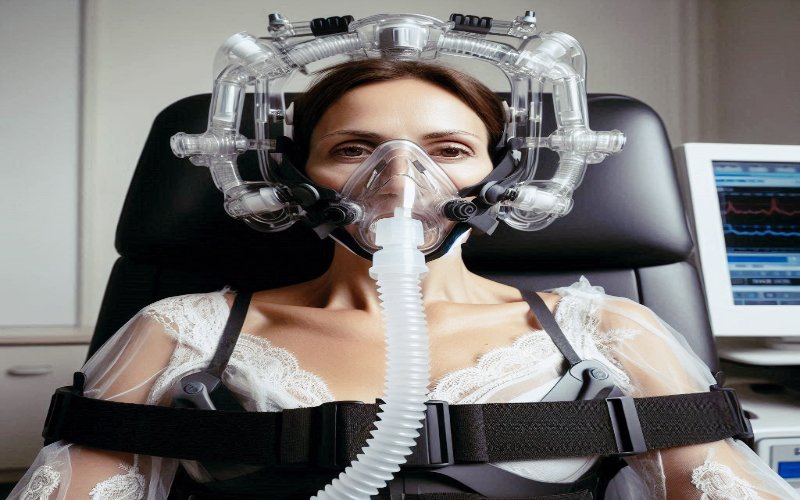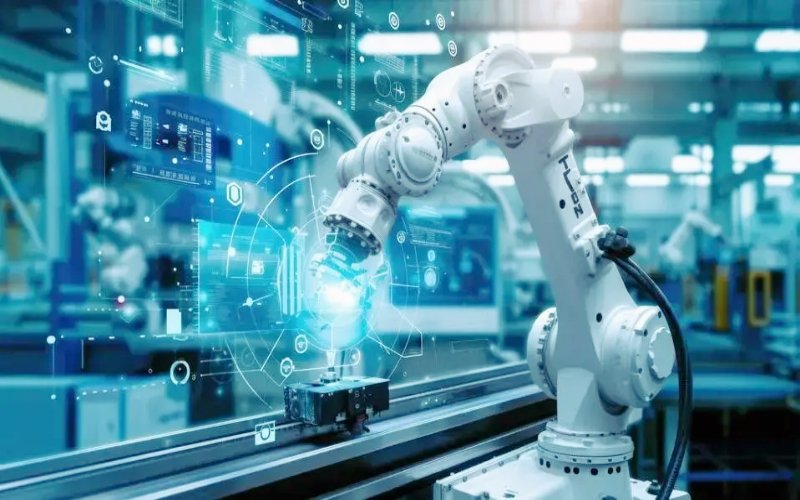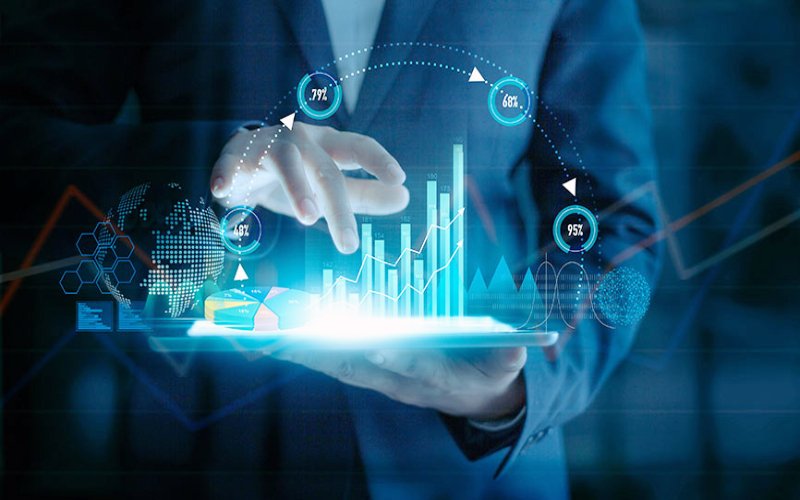Introduction to Artificial Intelligence and Robotics
Artificial intelligence and robotics are two really cool areas of technology right now. While they are distinct disciplines, their intersection is creating groundbreaking innovations. AI focuses on enabling machines to think and learn like humans, whereas robotics involves building physical machines that can perform tasks autonomously. Together, they are transforming industries, improving efficiencies, and paving the way for a future where intelligent robots might become commonplace.
What is Artificial Intelligence?
Artificial intelligence is a branch of computer science dedicated to creating systems capable of performing tasks that usually require human intelligence. These tasks include learning, reasoning, problem-solving, perception, and language understanding. AI is about developing algorithms that allow machines to process information, learn from data, and make decisions based on that learning.
Types of AI
There are two main types of AI: narrow AI and general AI. Artificial Intelligence that can only perform a specific task or function, rather than having a broad range of abilities, also known as weak AI, is designed to perform a specific task, such as voice recognition or playing chess. General AI, or strong AI, has broader capabilities and can perform any intellectual task that a human can do. Currently, most AI applications are narrow AI, but researchers are working towards developing general AI.
Applications of AI
Artificial intelligence is used in many different areas, like in hospitals and banks. In healthcare, AI can help diagnose diseases, recommend treatments, and even assist in surgery. In finance, AI algorithms are used for fraud detection, trading, and personal finance management. The versatility of AI makes it a powerful tool across various sectors.
What is Robotics?
Robotics is a type of engineering and computer science that focuses on making and using robots. Robots are machines that can be programmed to do things on their own or with some help. They use sensors and actuators to interact with the real world.
Types of Robots
Robots can be big or small, and each one is made for different jobs.Industrial robots are used in manufacturing to perform repetitive tasks with high precision. Service robots, such as vacuum cleaners or lawn mowers, help with household chores. There are also medical robots that assist in surgeries and therapeutic robots that help in rehabilitation.
History of Robotics
The concept of robots has been around for centuries, but the modern field of robotics began in the 20th century. The term “robot” was first introduced by Czech writer Karel Čapek in his 1920 play “R.U.R. (Rossum’s Universal Robots).” Since then, robotics has evolved significantly, with advancements in computing, sensors, and materials driving the development of increasingly sophisticated robots.
Differences Between Artificial Intelligence and Robotics
While AI and robotics are closely related, they are distinct fields with different focuses. Artificial intelligence and robotics deal with separate aspects of technology but often complement each other.
Focus and Scope
AI deals with the cognitive aspect, enabling machines to process information and learn from data. Robotics deals with the physical aspect, creating machines that can move, interact with their environment, and perform tasks. This fundamental difference means that while a robot can exist without AI, and AI can be applied to systems that are not robots, their combination creates intelligent machines capable of performing complex tasks autonomously.
Applications in Different Fields
AI is widely used in data analysis, natural language processing, and decision-making systems. Robotics is primarily used in manufacturing, healthcare, and service industries where physical tasks need to be automated. The integration of artificial intelligence and robotics enhances the capabilities of robots, allowing them to perform tasks that require perception, learning, and decision-making.
The Synergy of Artificial Intelligence and Robotics
When AI and robotics come together, they create systems that can perceive their environment, make decisions, and act upon them. This synergy is what makes intelligent robots possible. By using AI, robots can learn from what happens, adjust to new situations, and get better at their jobs over time.
Examples of AI in Robotics
- Autonomous Vehicles: Self-driving cars are one of the most well-known examples of artificial intelligence and robotics. These vehicles use AI to interpret sensor data, navigate roads, avoid obstacles, and make real-time driving decisions.
- Robotic Assistants: Personal assistants like Amazon’s Alexa on wheels (Astro) use AI to navigate homes, recognize users, and perform tasks like setting reminders or playing music.
- Healthcare Robots: Robots in healthcare use AI to assist in surgeries, provide rehabilitation, and even offer companionship to patients.
Challenges and Ethical Considerations
The integration of AI and robotics presents several challenges and ethical considerations. Ensuring the safety and reliability of these systems is paramount, especially when they are used in critical applications like healthcare and transportation.
Safety and Reliability
One of the biggest challenges is ensuring that AI-powered robots can operate safely and reliably in dynamic environments. This requires robust algorithms, extensive testing, and fail-safe mechanisms to prevent accidents.
Ethical Issues
There are also ethical issues to consider, such as the impact on employment, privacy concerns, and the potential for misuse. As robots become more autonomous, questions about accountability and decision-making processes become more critical. It is essential to develop frameworks and regulations to address these issues.
Future of Artificial Intelligence and Robotics
AI and robotics have a bright future ahead. Advances in machine learning, sensor technology, and materials science are paving the way for more capable and intelligent robots.
Emerging Trends
Some emerging trends include the development of more autonomous systems, improved human-robot interaction, and the use of AI to enhance robot learning and adaptability. These trends will enable robots to perform a wider range of tasks and operate in more complex environments.
Potential Impact
The potential impact of artificial intelligence and robotics is vast. They can revolutionize industries, improve quality of life, and address some of the world’s most pressing challenges. For instance, in agriculture, AI-powered robots can optimize crop management and increase yields. In healthcare, they can provide better patient care and support medical professionals.
Practical Applications of Artificial Intelligence and Robotics
Manufacturing
In the manufacturing sector, AI and robotics work hand in hand to improve efficiency and precision. Robots equipped with AI can adapt to changes in the production line, detect defects, and optimize processes. For example, AI-powered robots can perform quality control by identifying defects that are not visible to the human eye. This combination significantly enhances productivity and reduces waste.
Healthcare
Healthcare is another field where AI and robotics are making a significant impact. Robots can help doctors do difficult surgeries more accurately. AI algorithms can analyze medical images, helping doctors diagnose conditions more accurately. Additionally, robots can be used for patient care, administering medications, and even providing companionship to those in need.
Agriculture
Agriculture is benefiting from the integration of AI and robotics as well. Robots can perform tasks such as planting, watering, and harvesting crops. AI can analyze data from various sources to optimize these tasks, ensuring that crops receive the right amount of water and nutrients. This helps farmers grow more crops and use better ways to farm.
Logistics and Supply Chain
In logistics and supply chain management, AI and robotics streamline operations and increase efficiency. Autonomous robots are used in warehouses to pick and pack items, reducing the time it takes to fulfill orders. AI can optimize routes for delivery trucks, reducing fuel consumption and ensuring timely deliveries. This integration helps companies save costs and improve customer satisfaction.
Customer Service
AI and robotics are also transforming customer service. Chatbots powered by AI can handle customer inquiries efficiently, providing instant responses and freeing up human agents for more complex tasks. Robots can be used in retail stores to assist customers, answer questions, and manage inventory. This technology enhances the customer experience and improves service efficiency.
Education and Research
Educational Robots
In education, robots equipped with AI can serve as tutors, providing personalized learning experiences for students. These robots can adapt to each student’s learning pace and style, offering customized lessons and exercises. This approach helps students understand difficult concepts and stay engaged in their learning process.
Research and Development
In research and development, AI-powered robots are essential tools. They can perform experiments, collect data, and analyze results much faster than humans. This accelerates the pace of discovery and innovation across various scientific fields. For instance, in pharmaceuticals, robots can screen thousands of compounds to identify potential new drugs, speeding up the drug discovery process.
Ethical Considerations in AI and Robotics
Privacy and Data Security
As AI and robotics become more integrated into daily life, concerns about privacy and data security arise. AI systems require vast amounts of data to function effectively, which can lead to potential misuse or unauthorized access. Ensuring that data is collected, stored, and used ethically is crucial to maintaining public trust.
Employment and Job Displacement
The rise of AI and robotics also raises concerns about job displacement. As robots take over repetitive and hazardous tasks, there is a risk of reduced employment opportunities in certain sectors. It is essential to address this issue by investing in education and training programs that help workers transition to new roles in the evolving job market.
Accountability and Transparency
Another ethical consideration is accountability. As robots become more autonomous, determining who is responsible for their actions becomes challenging. Establishing clear guidelines and regulations for the development and deployment of AI and robotic systems is necessary to ensure accountability and transparency.
Future Trends in AI and Robotics
Human-Robot Collaboration
One of the most exciting trends is the development of collaborative robots, or cobots. These robots are designed to work alongside humans, enhancing their capabilities rather than replacing them. Cobots can assist with tasks that require precision, strength, or repetitive motion, allowing humans to focus on more complex and creative work.
AI-Driven Innovation
AI continues to drive innovation in robotics, enabling the development of more sophisticated and capable machines. Advances in machine learning, natural language processing, and computer vision are making robots more intelligent and versatile. This progress will lead to the creation of robots that can perform a wider range of tasks in diverse environments.
Sustainability and AI
AI and robotics are also contributing to sustainability efforts. For example, in agriculture, AI-powered robots can optimize resource use, reducing water and fertilizer consumption. In manufacturing, AI can help design more energy-efficient processes and reduce waste. These technologies are crucial in addressing global challenges such as climate change and resource depletion.
Preparing for the Future of AI and Robotics
Education and Training
To prepare for the future of AI and robotics, education and training are essential. Schools and universities need to incorporate AI and robotics into their curricula, ensuring that students are equipped with the skills needed for the future job market. Additionally, ongoing training and professional development programs can help current workers adapt to new technologies.
Policy and Regulation
Policymakers play a crucial role in shaping the future of AI and robotics. Developing regulations that promote innovation while addressing ethical concerns is essential. Policies should focus on ensuring data privacy, preventing job displacement, and establishing accountability for autonomous systems.
Conclusion
The convergence of artificial intelligence and robotics is transforming industries, improving efficiencies, and creating new opportunities. By understanding the differences and synergies between these fields, we can harness their potential to address some of the world’s most pressing challenges. As AI and robotics continue to evolve, it is crucial to address ethical considerations, invest in education and training, and develop policies that promote responsible innovation. The future of AI and robotics is bright, and by working together, we can shape a future that benefits everyone.
Also visit on techitl.com.




